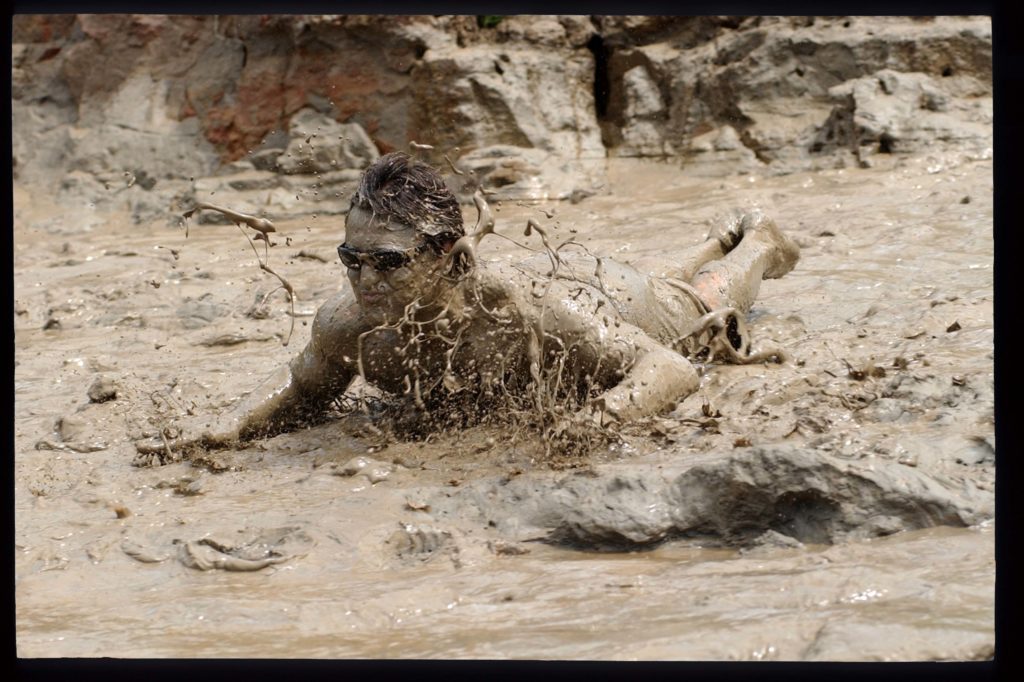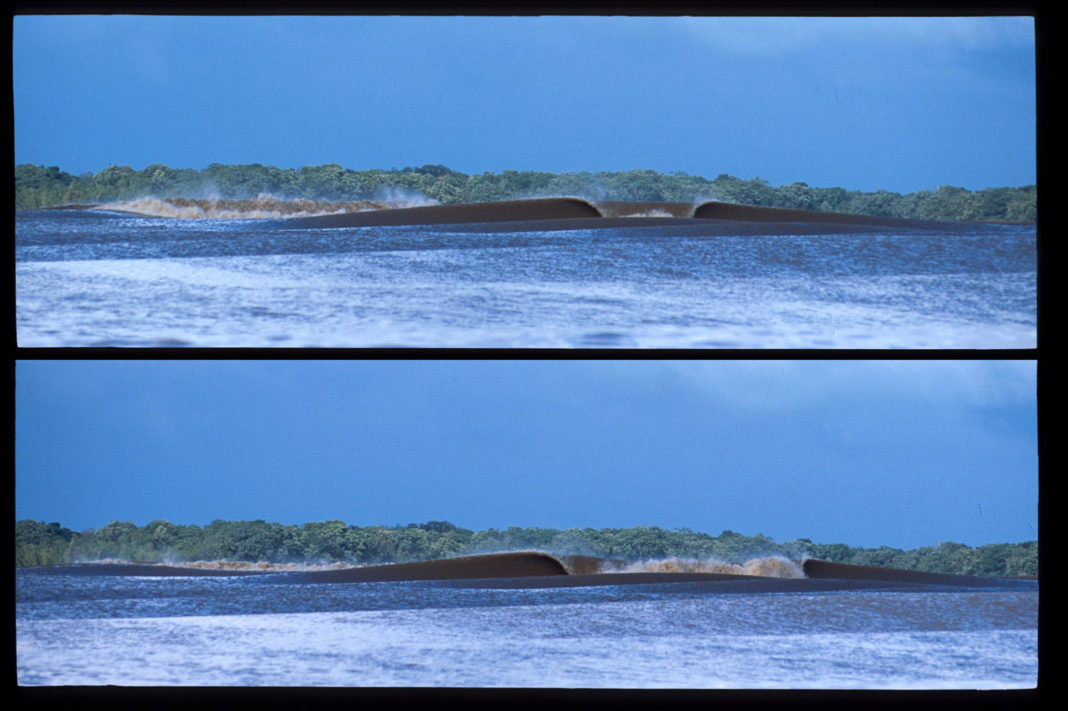Rick Werneck was the first photographer to ever shoot surfing a tidal bore, back in northern Brazil in 1997. This was the first ever documented trip to a Pororoca. And this trip started the whole tidal-bore surfing movement, we see around the world today.
Surfing Life published this pioneering trip in January 1997, Issue 112 which featured Ross Clarke-Jones surfing the brown tidal surge. At the time it was the world’s longest wave ever surfed, to which Rick testifies, “I’ve seen people ride it for over 34 minutes!”
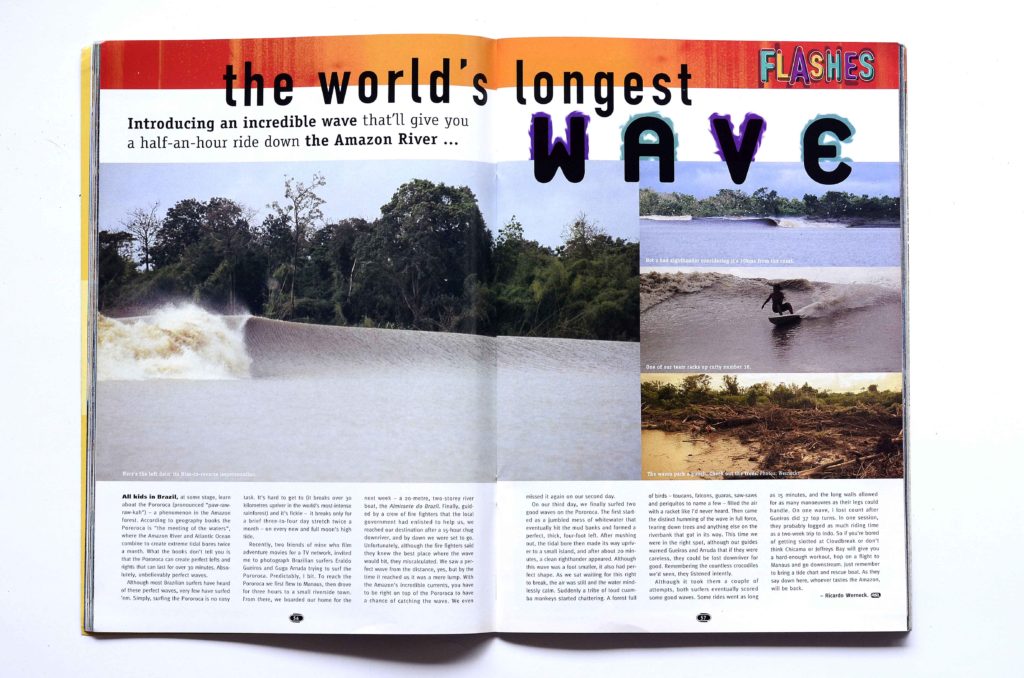
Rick also did a shoot there for the 1998 Guinness Book of Records and he’s been back there about a dozen times since that first trip. So there’s no one better to report on the latest happenings of the Pororoca, where it is drying up at an alarming rate.
Rick takes up the story;
“The farmers of the Araguari River area have brought down the trees to create pastures for their buffaloes. The roots that held the river banks against the force of the river are no longer there and “igarapés” (small rivulets, wide enough for just one or two canoes) started forming”.
In no time, these small rivulets became wide rivers and suddenly all the water that was funneled from the sea directly down the banks of the Araguari which formed the tidal bore, were lost. Like a car losing compression and its pistons failing to pump, the Araguari river just spilled into the wide and eroded river basin and failed to stand up into a wave.
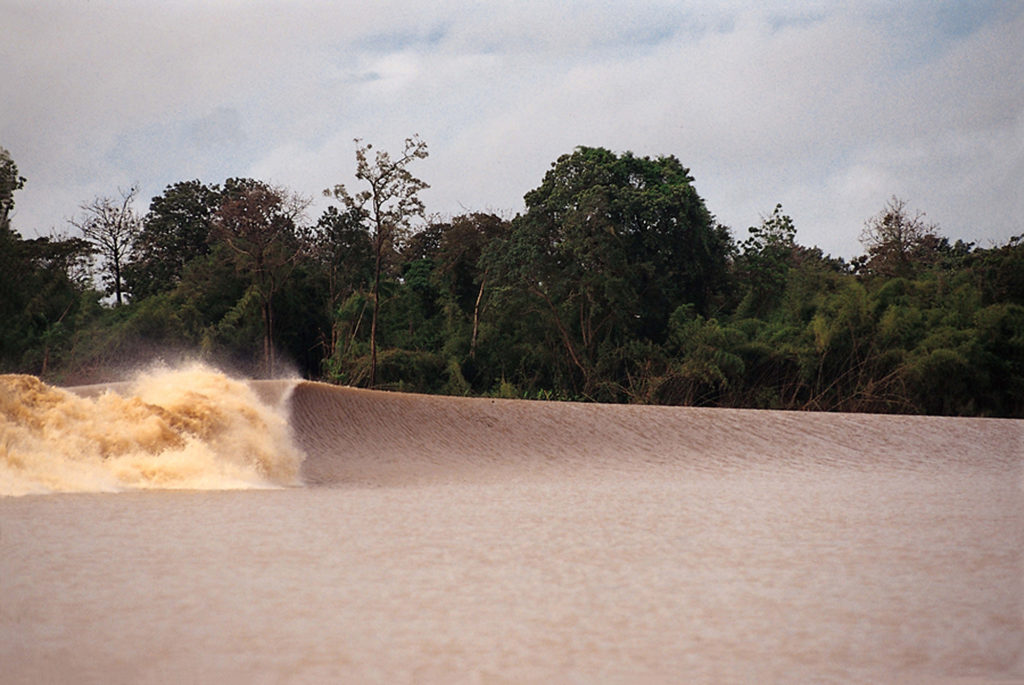
Photo: Rick Werneck
Werneck continues, “the Araguari River is just north of the Amazon River, as you can see in the photos. It runs for 25km and then turns right, where it runs for about another 14km.) All this area used to be surfable. I’ve seen classic barreling days on a trip with Brazilian surfer Picuruta Salazar and Gary Linden.

SL: How did the buffalo get there in the first place, they’re not indigenous to Brazil are they?
“There are many versions around how buffaloes – originally from Asia – landed in the North of Brazil. But, the truth is that they came on a boat from India that sank on its way to the Guiana. Some of the buffaloes swam to the shore, adapted well to the climate, spread around and stayed forever.”
SL: Why have the buffalo stayed around and not died out or been eradicated if they’re such a threat to the environment?
“They are vital to the region (now) because the buffaloes will take you anywhere (on their back or pulling wagons), including across muddy rivers, which is a great advantage in these places; the meat is good and the cheese is excellent and combined, they become the traditional “Marajoara Steak”, which is buffalo meat with buffalo cheese melted on top.
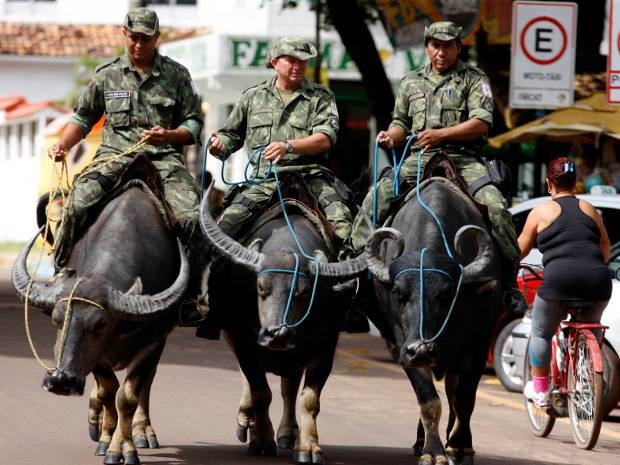
SL: Does this mean even in wet season, the tidal bore no longer works?
“No, sadly it no longer works. After years of pounding the pastures, too many ‘igarapés’ were formed and all the water from the tidal bore leaks out through theses little rivers. They don’t get channeled into the 12 km where the wave first breaks, anymore, let alone the second part, after the river turns right, which runs for another 5 km.”
SL: Are there anymore tidal bores in the area, or other stretches of the Araguari which work?
“Recently I’ve been on the extreme north of the Amazon River searching for new Pororocas but so far, there’s nothing that compares to what we used to call “The Hawaii of Pororocas”, the one that once broke on the Araguari River. It had the power, and the perfection of nothing else we will ever see.”
What’s more alarming than the erosion literally decompressing the tidal bore wave, is now thanks to the massive scale of erosion from the banks, there is now nothing to contain the water in it at all.
Werneck’s latest reports now state that at the widest point of the river where Ross Clarke-Jones and many others had 30+ minute rides, a span of river which was three-kilometers wide, has now completely dried up.
You can literally walk across this expanse of old river bed where waves used to stand up and do this.

As the rest of the world must now be resigned to the fact that we’ve lost one of the world’s natural surfing phenomena, Rick Werneck says it best, “I remember how many times I flew over that river on a helicopter and thought to myself: “It’s so much water that it’ll never dry out!
… how naive of me.”
Imagine if we’d lost a river of this size in Australia? What would we do about it, would people even care?
